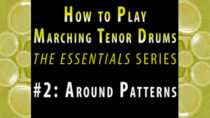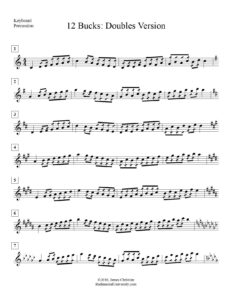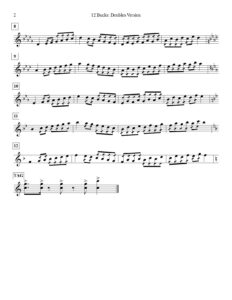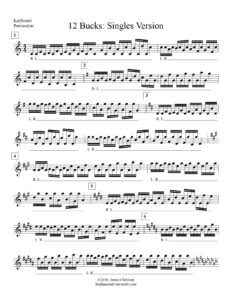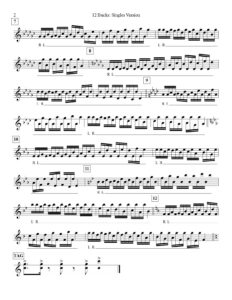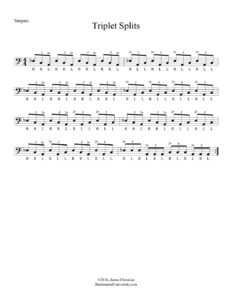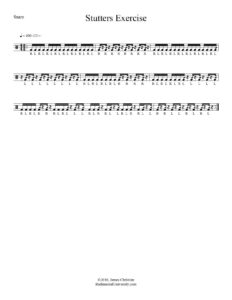Five-Drum Version
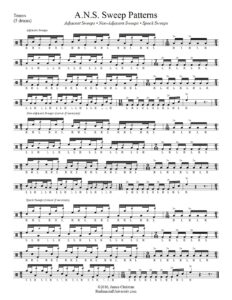
Six-Drum Version
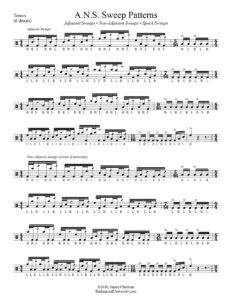
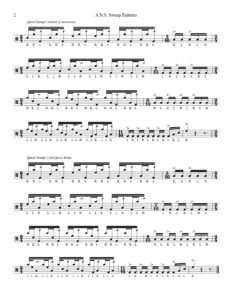
To view the exercise, click on the images to enlarge. To download in PDF format, click here for the five-drum version, and click here for the six-drum version.
This exercise is written for either a five-drum setup or a six-drum setup. While the six-drum setup obviously has more options, the fundamental skills covered are about the same.
As the title indicates, this exercise focuses on sweep patterns. A sweep is a double stroke split among two different drums. The “A.N.S.” in the title stands for Adjacent Sweeps, Non-Adjacent Sweeps, and Spock Sweeps.
Adjacent sweeps are sweeps between two drums right next to each other. On the basic quad setup, this would cover sweeps between drums 2 & 4, 1 & 2, and 1 & 3. For a six-drum setup, this would also include the two spock drums.
Non-adjacent sweeps are sweeps between two drums not next to each other. On the basic quad setup, this would cover sweeps between drums 1 & 4, 2 & 3, and 3 & 4. (On the six-drum version of this exercise, I went ahead and included drum 4 to the farthest spock drum and drum 3 to the farthest spock drum. Technically, these would fall under what I call “spock sweeps,” but the movements are similar to non-adjacent sweeps, so they work here. These sweeps are somewhat of a gray area.) These sweeps require a farther reach than adjacent sweeps, and they are more difficult to play fast. When playing this exercise, feel free to take this section slower if needed.
Spock sweeps require a different type of movement than adjacent or non-adjacent sweeps. As the name indicates, these cover any sweeps utilizing the spock drum(s). When sweeping between the spock drum and drums 1 or 2, you must use a push-pull motion. This is quite difficult to play fast. Feel free to adjust the tempo on this section as well.
When it comes to tempo, take each section as fast as you can comfortably play it. Of course, you should initially start slowly to focus on your technique and accuracy. Once you have a solid foundation, you can start speeding it up. As always, focus on accuracy and great sound quality. If you keep hitting rims, slow down a little bit and reassess your aiming spot.
The odd-metered measures are intended to provide a little rhythmic interest between the sweep patterns. Focus on playing the 16th notes with steady time.
If you can play through this exercise smoothly, you will have a pretty solid grasp on all of the sweep combinations!

